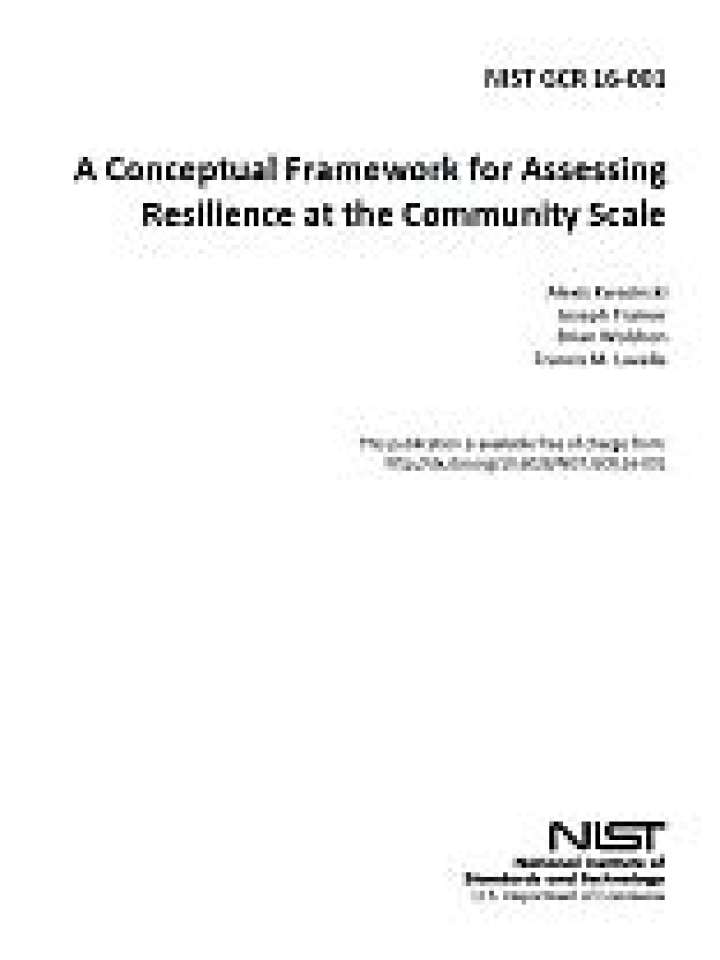A conceptual framework for assessing resilience at the community scale
This report is the second of two reports produced under the NIST Community Resilience Assessment Methodology (CRAM) project. The primary objective of the first report (Lavelle et al. 2015) was to review and critically assess nine existing tools and methodologies. The nine selected methodologies were not all specifically developed for the purpose of community resilience assessment, but each was found to address one or more important aspects of community resilience assessment. The purpose of this second report is to build upon the strengths of these exiting approaches, identify gaps or needs, and recommend a conceptual framework for filling those gaps.
The objective of the CRAM project is to provide a technical foundation for a methodology to assess resilience at the community scale. For the purposes of this project, community resilience is defined as “the ability to prepare for and adapt to changing conditions and to withstand and recover rapidly from disruptions” (PPD-21 2013). A key point to note is that the concept of community resilience and its incorporation into routine planning, engineering, and community administrative practices is largely in its infancy in the United States. As such, the observations and recommendations incorporated into this report have been developed as part of an evolving effort which will continue to advance as new knowledge, experience, and research results become available.
Explore further

